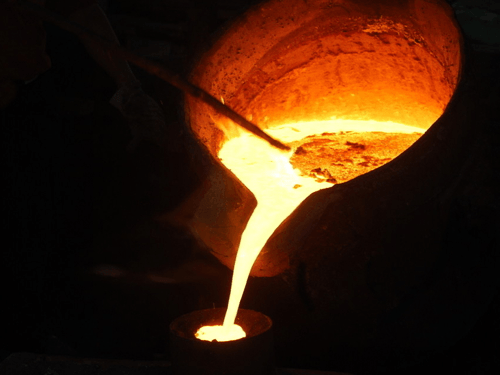Cooling for induction melting furnace equipment and furnace body
Casting is the core industry in Taiwan, and many automobile parts processing manufacturing has the highest standard in the world. The manufacturing process is utilizing High/ Medium/ Low Induction Furnace to melt different material into liquid iron.
Cooling in casting is an important process as it affects the production rate and the machine operating stability. Cooling is needed in:
- Induction heating on electric circuit (or coal fire)
- Cooling for furnace body
When the electric circuit of induction furnace is heated, the electronic component produces heat energy required to be cooled anytime. Otherwise, the induction furnace will be not capable of operating normally due to overheating of circuit system. Therefore, that the water quality is highly demanded and the pure water is usually used as cooling water.
Melting furnace utilizes induction furnace that melts the iron, stainless steel, or copper. At this time, heated furnace is required to be cooled and avoid the highest temperature on furnace body. If the blockage of water pipe interferes with temperature cooling, this will harm heating equipment. To effectively cool temperature, the water quality is the priority we have to consider because the water quality is the reason that cause in the blockage on water pipes.
Therefore, strictly speaking, cooling requirement is highly needed in the casting industry. In addition to effective cooling, water quality is also important since the impurity will normally cause blockage in the cooling pipe.
Effects of limescale in casting cooling
The cooling water quality is the highly demand for most casting industry. It’s the reason that pure water is used as cooling liquid entering to induction furnace. Cooling system that utilizes open cooling tower with plate heat exchanger processes heat exchanger. There are some pros and cons as reference:
Pros:
- Open cooling tower with cheaper price
- Plate heat exchanger effectively dissipates heat at the beginning
- Save space if open tower with plate heat exchanger
Cons:
- Open cooling tower isn’t capable of isolating limescale
- Limescale is easy to occur in plate type heat exchangers
- Limescale on heat exchanger contributes to lower efficiency
- Acid washing cause in damage on heat exchanger
Effects of limescale on plate heat exchanger
Current technology enables the modular production in plate heat exchanger and the price is relatively less expensive in the market. Due to this reason, open cooling tower that connected with plate heat exchanger and pure water equipment is used for casting machine. Under the circumstances of good water quality, cooling effect is better and cheaper. But the place full of dust and Carbonate Calcium usually causes in blockage of limscale on the heat exchanger. Even worse, the temperature is not able to effectively lower, further contributes to the shutdown problem of casting machine.
Plate heat exchangers are made with narrow channels and big stacked design, hence, the heat dissipation efficiency is much higher than normal radiator. But the channel is easy to be blocked by Calcium Carbonate and impurities, finally causing the machine required to be closed down to clean heat exchanger.
But the more serious problem is the blockage of plate heat exchanger caused by Calcium Carbonate which was contained in cooling water reacts with heat to form limescale. It is impossible that dissembling the heat exchangers anytime for cleaning to recover original heat exchange efficiency, indirectly resulting in the increase of production shutdown. The more frequency the production line closes, the more times it needs to clean. Most customers inquiring about JIN HUI Closed Circuit Cooling Tower almost ask for the solution of solving limescale blockage on heat exchanger caused by poor water quality.
Solution of limescale on casting industry
In long-term view, the stability of closed circuit cooling tower is much higher than plate heat exchanger. Therefore, Jin Hui also suggest that closed circuit cooling tower totally replace the open cooling tower with heat exchanger.
The biggest different characteristics between Jin Hui closed circuit cooling tower and other cooling tower is: Utilizing internal heat exchanger of cooling tower separate cooling water for equipment (for inner water) and cooling water for cooling tower (outer water) to ensure that cooling water is always clean for casting or heating equipment. In that case, it’s only necessary to clean one cooling tower instead of all cooling water pipes and equipment. There are several advantages of Jin Hui Closed Circuit Cooling Tower:
- Increase in heat dissipation area, reduce in potential of forming limescale
- Regularly renew outer water to prevent the increase in limescale concentration
- Decreasing the shutdown situation caused by overheating
For further information about Jin Hui Closed Circuit Cooling Tower, please refer to products page (HCT Closed Circuit Cooling Tower). Also, Jin Hui cooling tower with the advantage of easy maintenance satisfies customers’ expectation and reach the better production efficiency for factory.









